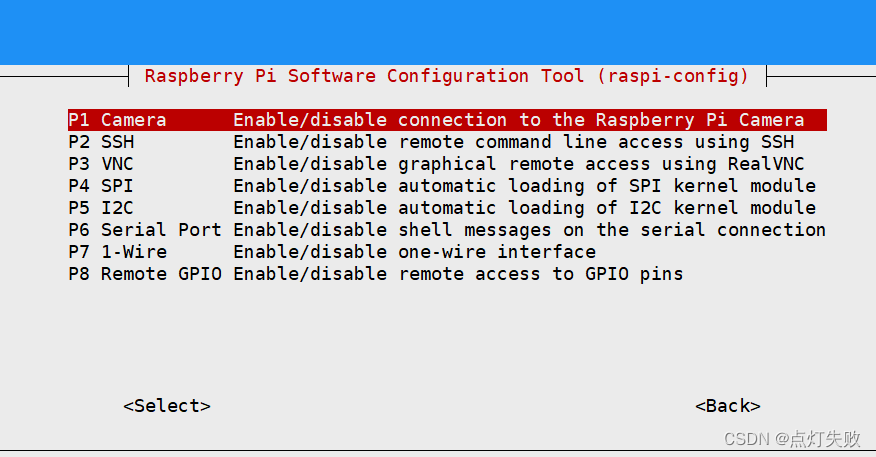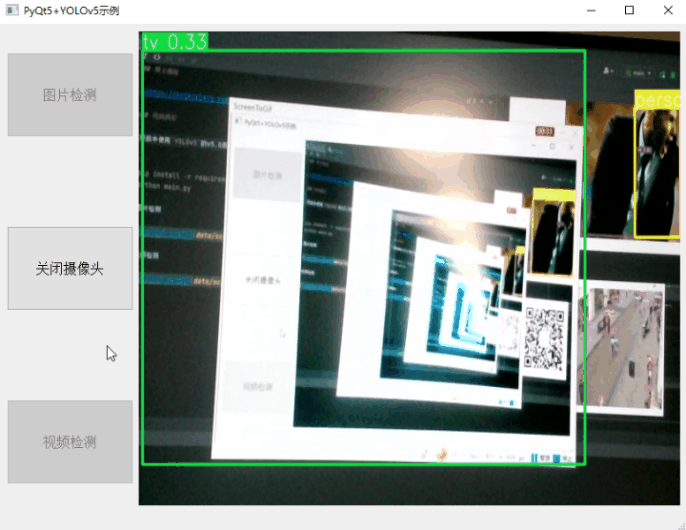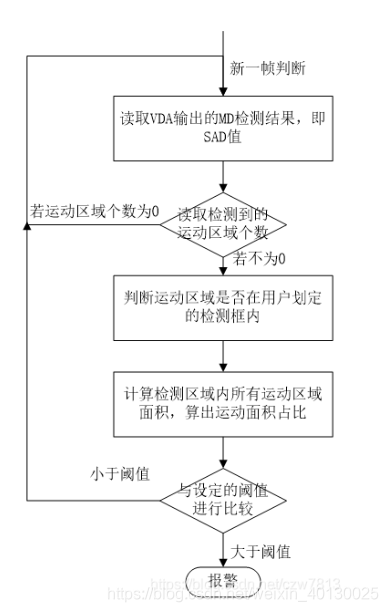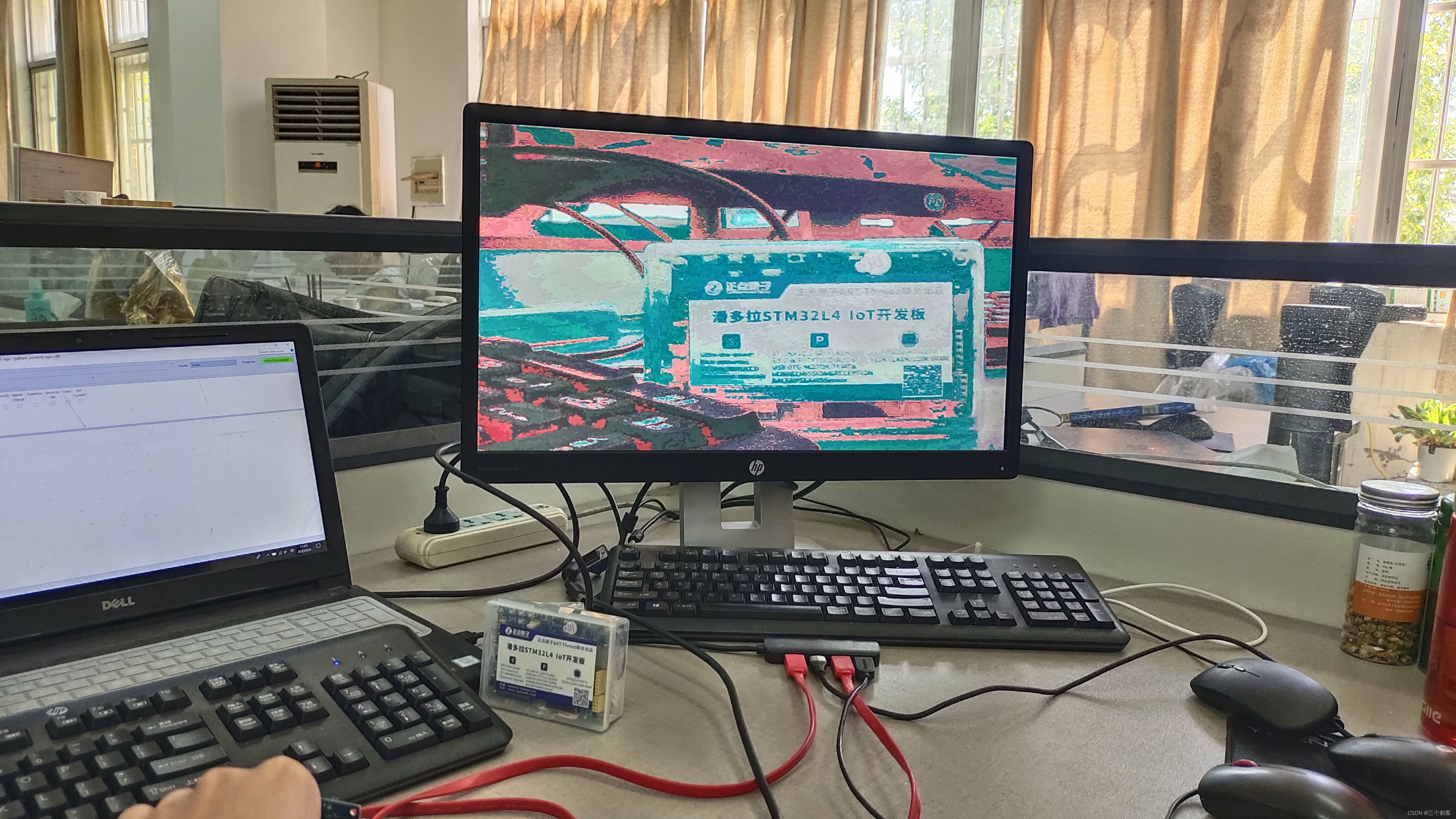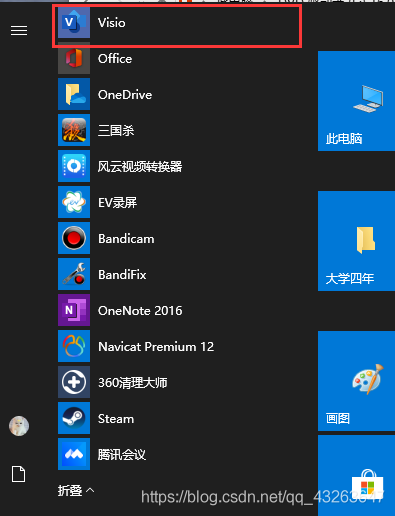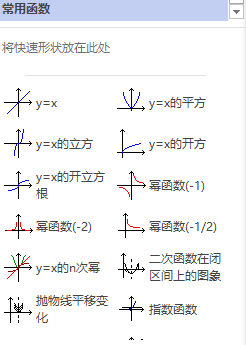文章目录
- 前言
- 一、YOLOV5的强大之处
- 二、YOLOV5部署多路摄像头的web应用
- 1.多路摄像头读取
- 2.模型封装
- 3.Flask后端处理
- 4.前端展示
- 总结
前言
YOLOV5模型从发布到现在都是炙手可热的目标检测模型,被广泛运用于各大场景之中。因此,我们不光要知道如何进行yolov5模型的训练,而且还要知道怎么进行部署应用。在本篇博客中,我将利用yolov5模型简单的实现从摄像头端到web端的部署应用demo,为读者提供一些部署思路。一、YOLOV5的强大之处
你与目标检测高手之差一个YOLOV5模型。YOLOV5可以说是现目前几乎将所有目标检测tricks运用于一身的模型了。在它身上能找到很多目前主流的数据增强、模型训练、模型后处理的方法,下面我们就简单总结一下yolov5所使用到的方法:
-
yolov5增加的功能:

-
yolov5训练和预测的tricks:

二、YOLOV5部署多路摄像头的web应用
1.多路摄像头读取
在此篇博客中,采用了yolov5源码的datasets.py代码中的LoadStreams类进行多路摄像头视频流的读取。因为,我们只会用到datasets.py中视频流读取的部分代码,所以,将其提取出来,新建一个camera.py文件,下面则是camera.py文件的代码部分:
# coding:utf-8
import os
import cv2
import glob
import time
import numpy as np
from pathlib import Path
from utils.datasets import letterbox
from threading import Thread
from utils.general import clean_strimg_formats = ['bmp', 'jpg', 'jpeg', 'png', 'tif', 'tiff', 'dng', 'webp'] # acceptable image suffixes
vid_formats = ['mov', 'avi', 'mp4', 'mpg', 'mpeg', 'm4v', 'wmv', 'mkv'] # acceptable video suffixesclass LoadImages: # for inferencedef __init__(self, path, img_size=640, stride=32):p = str(Path(path).absolute()) # os-agnostic absolute pathif '*' in p:files = sorted(glob.glob(p, recursive=True)) # globelif os.path.isdir(p):files = sorted(glob.glob(os.path.join(p, '*.*'))) # direlif os.path.isfile(p):files = [p] # fileselse:raise Exception(f'ERROR: {p} does not exist')images = [x for x in files if x.split('.')[-1].lower() in img_formats]videos = [x for x in files if x.split('.')[-1].lower() in vid_formats]ni, nv = len(images), len(videos)self.img_size = img_sizeself.stride = strideself.files = images + videosself.nf = ni + nv # number of filesself.video_flag = [False] * ni + [True] * nvself.mode = 'image'if any(videos):self.new_video(videos[0]) # new videoelse:self.cap = Noneassert self.nf > 0, f'No images or videos found in {p}. ' \f'Supported formats are:\nimages: {img_formats}\nvideos: {vid_formats}'def __iter__(self):self.count = 0return selfdef __next__(self):if self.count == self.nf:raise StopIterationpath = self.files[self.count]if self.video_flag[self.count]:# Read videoself.mode = 'video'ret_val, img0 = self.cap.read()if not ret_val:self.count += 1self.cap.release()if self.count == self.nf: # last videoraise StopIterationelse:path = self.files[self.count]self.new_video(path)ret_val, img0 = self.cap.read()self.frame += 1print(f'video {self.count + 1}/{self.nf} ({self.frame}/{self.nframes}) {path}: ', end='')else:# Read imageself.count += 1img0 = cv2.imread(path) # BGRassert img0 is not None, 'Image Not Found ' + pathprint(f'image {self.count}/{self.nf} {path}: ', end='')# Padded resizeimg = letterbox(img0, self.img_size, stride=self.stride)[0]# Convertimg = img[:, :, ::-1].transpose(2, 0, 1) # BGR to RGB, to 3x416x416img = np.ascontiguousarray(img)return path, img, img0, self.capdef new_video(self, path):self.frame = 0self.cap = cv2.VideoCapture(path)self.nframes = int(self.cap.get(cv2.CAP_PROP_FRAME_COUNT))def __len__(self):return self.nf # number of filesclass LoadWebcam: # for inferencedef __init__(self, pipe='0', img_size=640, stride=32):self.img_size = img_sizeself.stride = strideif pipe.isnumeric():pipe = eval(pipe) # local camera# pipe = 'rtsp://192.168.1.64/1' # IP camera# pipe = 'rtsp://username:password@192.168.1.64/1' # IP camera with login# pipe = 'http://wmccpinetop.axiscam.net/mjpg/video.mjpg' # IP golf cameraself.pipe = pipeself.cap = cv2.VideoCapture(pipe) # video capture objectself.cap.set(cv2.CAP_PROP_BUFFERSIZE, 3) # set buffer sizedef __iter__(self):self.count = -1return selfdef __next__(self):self.count += 1if cv2.waitKey(1) == ord('q'): # q to quitself.cap.release()cv2.destroyAllWindows()raise StopIteration# Read frameif self.pipe == 0: # local cameraret_val, img0 = self.cap.read()img0 = cv2.flip(img0, 1) # flip left-rightelse: # IP cameran = 0while True:n += 1self.cap.grab()if n % 30 == 0: # skip framesret_val, img0 = self.cap.retrieve()if ret_val:break# Printassert ret_val, f'Camera Error {self.pipe}'img_path = 'webcam.jpg'print(f'webcam {self.count}: ', end='')# Padded resizeimg = letterbox(img0, self.img_size, stride=self.stride)[0]# Convertimg = img[:, :, ::-1].transpose(2, 0, 1) # BGR to RGB, to 3x416x416img = np.ascontiguousarray(img)return img_path, img, img0, Nonedef __len__(self):return 0class LoadStreams: # multiple IP or RTSP camerasdef __init__(self, sources='streams.txt', img_size=640, stride=32):self.mode = 'stream'self.img_size = img_sizeself.stride = strideif os.path.isfile(sources):with open(sources, 'r') as f:sources = [x.strip() for x in f.read().strip().splitlines() if len(x.strip())]else:sources = [sources]n = len(sources)self.imgs = [None] * nself.sources = [clean_str(x) for x in sources] # clean source names for laterfor i, s in enumerate(sources):# Start the thread to read frames from the video streamprint(f'{i + 1}/{n}: {s}... ', end='')cap = cv2.VideoCapture(eval(s) if s.isnumeric() else s)assert cap.isOpened(), f'Failed to open {s}'w = int(cap.get(cv2.CAP_PROP_FRAME_WIDTH))h = int(cap.get(cv2.CAP_PROP_FRAME_HEIGHT))fps = cap.get(cv2.CAP_PROP_FPS) % 100_, self.imgs[i] = cap.read() # guarantee first framethread = Thread(target=self.update, args=([i, cap]), daemon=True)print(f' success ({w}x{h} at {fps:.2f} FPS).')thread.start()print('') # newline# check for common shapess = np.stack([letterbox(x, self.img_size, stride=self.stride)[0].shape for x in self.imgs], 0) # shapesself.rect = np.unique(s, axis=0).shape[0] == 1 # rect inference if all shapes equalif not self.rect:print('WARNING: Different stream shapes detected. For optimal performance supply similarly-shaped streams.')def update(self, index, cap):# Read next stream frame in a daemon threadn = 0while cap.isOpened():n += 1# _, self.imgs[index] = cap.read()cap.grab()if n == 4: # read every 4th framesuccess, im = cap.retrieve()self.imgs[index] = im if success else self.imgs[index] * 0n = 0time.sleep(0.01) # wait timedef __iter__(self):self.count = -1return selfdef __next__(self):self.count += 1img0 = self.imgs.copy()if cv2.waitKey(1) == ord('q'): # q to quitcv2.destroyAllWindows()raise StopIteration# Letterboximg = [letterbox(x, self.img_size, auto=self.rect, stride=self.stride)[0] for x in img0]# Stackimg = np.stack(img, 0)# Convertimg = img[:, :, :, ::-1].transpose(0, 3, 1, 2) # BGR to RGB, to bsx3x416x416img = np.ascontiguousarray(img)return self.sources, img, img0, Nonedef __len__(self):return 0 # 1E12 frames = 32 streams at 30 FPS for 30 years
2.模型封装
接下来,我们借助detect.py文件对yolov5模型进行接口封装,使其提供模型推理能力。新建一个yolov5.py文件,构建一个名为darknet的类,使用函数detect,提供目标检测能力。其代码如下:
# coding:utf-8
import cv2
import json
import time
import torch
import numpy as np
from camera import LoadStreams, LoadImages
from utils.torch_utils import select_device
from models.experimental import attempt_load
from utils.general import non_max_suppression, scale_coords, letterbox, check_imshowclass Darknet(object):"""docstring for Darknet"""def __init__(self, opt):self.opt = optself.device = select_device(self.opt["device"])self.half = self.device.type != 'cpu' # half precision only supported on CUDAself.model = attempt_load(self.opt["weights"], map_location=self.device)self.stride = int(self.model.stride.max()) self.model.to(self.device).eval()self.names = self.model.module.names if hasattr(self.model, 'module') else self.model.namesif self.half: self.model.half()self.source = self.opt["source"]self.webcam = self.source.isnumeric() or self.source.endswith('.txt') or self.source.lower().startswith(('rtsp://', 'rtmp://', 'http://'))def preprocess(self, img):img = np.ascontiguousarray(img)img = torch.from_numpy(img).to(self.device)img = img.half() if self.half else img.float() # uint8 to fp16/32img /= 255.0 # 图像归一化if img.ndimension() == 3:img = img.unsqueeze(0)return imgdef detect(self, dataset):view_img = check_imshow()t0 = time.time()for path, img, img0s, vid_cap in dataset:img = self.preprocess(img)t1 = time.time()pred = self.model(img, augment=self.opt["augment"])[0] # 0.22spred = pred.float()pred = non_max_suppression(pred, self.opt["conf_thres"], self.opt["iou_thres"])t2 = time.time()pred_boxes = []for i, det in enumerate(pred):if self.webcam: # batch_size >= 1p, s, im0, frame = path[i], '%g: ' % i, img0s[i].copy(), dataset.countelse:p, s, im0, frame = path, '', img0s, getattr(dataset, 'frame', 0)s += '%gx%g ' % img.shape[2:] # print stringgn = torch.tensor(im0.shape)[[1, 0, 1, 0]] # normalization gain whwhif det is not None and len(det):det[:, :4] = scale_coords(img.shape[2:], det[:, :4], im0.shape).round()# Print resultsfor c in det[:, -1].unique():n = (det[:, -1] == c).sum() # detections per classs += f"{n} {self.names[int(c)]}{'s' * (n > 1)}, " # add to stringfor *xyxy, conf, cls_id in det:lbl = self.names[int(cls_id)]xyxy = torch.tensor(xyxy).view(1, 4).view(-1).tolist()score = round(conf.tolist(), 3)label = "{}: {}".format(lbl, score)x1, y1, x2, y2 = int(xyxy[0]), int(xyxy[1]), int(xyxy[2]), int(xyxy[3])pred_boxes.append((x1, y1, x2, y2, lbl, score))if view_img:self.plot_one_box(xyxy, im0, color=(255, 0, 0), label=label)# Print time (inference + NMS)# print(pred_boxes)print(f'{s}Done. ({t2 - t1:.3f}s)')if view_img:print(str(p))cv2.imshow(str(p), cv2.resize(im0, (800, 600)))if self.webcam:if cv2.waitKey(1) & 0xFF == ord('q'): breakelse:cv2.waitKey(0)print(f'Done. ({time.time() - t0:.3f}s)')# print('[INFO] Inference time: {:.2f}s'.format(t3-t2))# return pred_boxes# Plotting functionsdef plot_one_box(self, x, img, color=None, label=None, line_thickness=None):# Plots one bounding box on image imgtl = line_thickness or round(0.001 * max(img.shape[0:2])) + 1 # line thicknesscolor = color or [random.randint(0, 255) for _ in range(3)]c1, c2 = (int(x[0]), int(x[1])), (int(x[2]), int(x[3]))cv2.rectangle(img, c1, c2, color, thickness=tl)if label:tf = max(tl - 1, 1) # font thicknesst_size = cv2.getTextSize(label, 0, fontScale=tl / 3, thickness=tf)[0]c2 = c1[0] + t_size[0], c1[1] - t_size[1] - 3cv2.rectangle(img, c1, c2, color, -1) # filledcv2.putText(img, label, (c1[0], c1[1] - 2), 0, tl / 3, [0, 0, 0], thickness=tf, lineType=cv2.LINE_AA)if __name__ == "__main__":with open('yolov5_config.json', 'r', encoding='utf8') as fp:opt = json.load(fp)print('[INFO] YOLOv5 Config:', opt)darknet = Darknet(opt)if darknet.webcam:# cudnn.benchmark = True # set True to speed up constant image size inferencedataset = LoadStreams(darknet.source, img_size=opt["imgsz"], stride=darknet.stride)else:dataset = LoadImages(darknet.source, img_size=opt["imgsz"], stride=darknet.stride)darknet.detect(dataset)cv2.destroyAllWindows()
此外,还需要提供一个模型配置文件,我们使用json文件进行保存。新建一个yolov5_config.json文件,内容如下:
{"source": "streams.txt", # 为视频图像文件地址"weights": "runs/train/exp/weights/best.pt", # 自己的模型地址"device": "cpu", # 使用的device类别,如是GPU,可填"0""imgsz": 640, # 输入图像的大小"stride": 32, # 步长"conf_thres": 0.35, # 置信值阈值"iou_thres": 0.45, # iou阈值"augment": false # 是否使用图像增强
}
视频图像文件可以是单独的一张图像,如:"…/images/demo.jpg",也可以是一个视频文件,如:"…/videos/demo.mp4",也可以是一个视频流地址,如:“rtsp://wowzaec2demo.streamlock.net/vod/mp4:BigBuckBunny_115k.mov”,还可以是一个txt文件,里面包含多个视频流地址,如:
rtsp://wowzaec2demo.streamlock.net/vod/mp4:BigBuckBunny_115k.mov
rtsp://wowzaec2demo.streamlock.net/vod/mp4:BigBuckBunny_115k.mov
- 有了如此配置信息,通过运行yolov5.py代码,我们能实现对视频文件(mp4、avi等)、视频流地址(http、rtsp、rtmp等)、图片(jpg、png)等视频图像文件进行目标检测推理的效果。
3.Flask后端处理
有了对模型封装的代码,我们就可以利用flask框架实时向前端推送算法处理之后的图像了。新建一个web_main.py文件:
# import the necessary packages
from yolov5 import Darknet
from camera import LoadStreams, LoadImages
from utils.general import non_max_suppression, scale_coords, letterbox, check_imshow
from flask import Response
from flask import Flask
from flask import render_template
import time
import torch
import json
import cv2
import os# initialize a flask object
app = Flask(__name__)# initialize the video stream and allow the camera sensor to warmup
with open('yolov5_config.json', 'r', encoding='utf8') as fp:opt = json.load(fp)print('[INFO] YOLOv5 Config:', opt)darknet = Darknet(opt)
if darknet.webcam:# cudnn.benchmark = True # set True to speed up constant image size inferencedataset = LoadStreams(darknet.source, img_size=opt["imgsz"], stride=darknet.stride)
else:dataset = LoadImages(darknet.source, img_size=opt["imgsz"], stride=darknet.stride)
time.sleep(2.0)@app.route("/")
def index():# return the rendered templatereturn render_template("index.html")def detect_gen(dataset, feed_type):view_img = check_imshow()t0 = time.time()for path, img, img0s, vid_cap in dataset:img = darknet.preprocess(img)t1 = time.time()pred = darknet.model(img, augment=darknet.opt["augment"])[0] # 0.22spred = pred.float()pred = non_max_suppression(pred, darknet.opt["conf_thres"], darknet.opt["iou_thres"])t2 = time.time()pred_boxes = []for i, det in enumerate(pred):if darknet.webcam: # batch_size >= 1feed_type_curr, p, s, im0, frame = "Camera_%s" % str(i), path[i], '%g: ' % i, img0s[i].copy(), dataset.countelse:feed_type_curr, p, s, im0, frame = "Camera", path, '', img0s, getattr(dataset, 'frame', 0)s += '%gx%g ' % img.shape[2:] # print stringgn = torch.tensor(im0.shape)[[1, 0, 1, 0]] # normalization gain whwhif det is not None and len(det):det[:, :4] = scale_coords(img.shape[2:], det[:, :4], im0.shape).round()# Print resultsfor c in det[:, -1].unique():n = (det[:, -1] == c).sum() # detections per classs += f"{n} {darknet.names[int(c)]}{'s' * (n > 1)}, " # add to stringfor *xyxy, conf, cls_id in det:lbl = darknet.names[int(cls_id)]xyxy = torch.tensor(xyxy).view(1, 4).view(-1).tolist()score = round(conf.tolist(), 3)label = "{}: {}".format(lbl, score)x1, y1, x2, y2 = int(xyxy[0]), int(xyxy[1]), int(xyxy[2]), int(xyxy[3])pred_boxes.append((x1, y1, x2, y2, lbl, score))if view_img:darknet.plot_one_box(xyxy, im0, color=(255, 0, 0), label=label)# Print time (inference + NMS)# print(pred_boxes)print(f'{s}Done. ({t2 - t1:.3f}s)')if feed_type_curr == feed_type:frame = cv2.imencode('.jpg', im0)[1].tobytes()yield (b'--frame\r\n' b'Content-Type: image/jpeg\r\n\r\n' + frame + b'\r\n')@app.route('/video_feed/<feed_type>')
def video_feed(feed_type):"""Video streaming route. Put this in the src attribute of an img tag."""if feed_type == 'Camera_0':return Response(detect_gen(dataset=dataset, feed_type=feed_type),mimetype='multipart/x-mixed-replace; boundary=frame')elif feed_type == 'Camera_1':return Response(detect_gen(dataset=dataset, feed_type=feed_type),mimetype='multipart/x-mixed-replace; boundary=frame')if __name__ == '__main__':app.run(host='0.0.0.0', port="5000", threaded=True)通过detect_gen函数将多个视频流地址推理后的图像按照feed_type类型,通过video_feed视频流路由进行传送到前端。
4.前端展示
最后,我们写一个简单的前端代码。首先新建一个templates文件夹,再在此文件夹中新建一个index.html文件,将下面h5代码写入其中:
<html><head><style>* {box-sizing: border-box;text-align: center;}.img-container {float: left;width: 30%;padding: 5px;}.clearfix::after {content: "";clear: both;display: table;}.clearfix{margin-left: 500px;}</style></head><body><h1>Multi-camera with YOLOv5</h1><div class="clearfix"><div class="img-container" align="center"><p align="center">Live stream 1</p><img src="{{ url_for('video_feed', feed_type='Camera_0') }}" class="center" style="border:1px solid black;width:100%" alt="Live Stream 1"></div><div class="img-container" align="center"><p align="center">Live stream 2</p><img src="{{ url_for('video_feed', feed_type='Camera_1') }}" class="center" style="border:1px solid black;width:100%" alt="Live Stream 2"></div></div></body>
</html>至此,我们利用YOLOv5模型实现多路摄像头实时推理代码就写完了,下面我们开始运行:
- 在终端中进行跟目录下,直接运行:
python web_main.py
然后,会在终端中出现如下信息:
[INFO] YOLOv5 Config: {'source': 'streams.txt', 'weights': 'runs/train/exp/weights/best.pt', 'device': 'cpu', 'imgsz': 640, 'stride': 32, 'conf_thres': 0.35, 'iou_thres': 0.45, 'augment': False}
Fusing layers...
1/2: rtsp://wowzaec2demo.streamlock.net/vod/mp4:BigBuckBunny_115k.mov... success (240x160 at 24.00 FPS).
2/2: rtsp://wowzaec2demo.streamlock.net/vod/mp4:BigBuckBunny_115k.mov... success (240x160 at 24.00 FPS).* Serving Flask app "web_main" (lazy loading)* Environment: productionWARNING: This is a development server. Do not use it in a production deployment.Use a production WSGI server instead.* Debug mode: off* Running on http://0.0.0.0:5000/ (Press CTRL+C to quit)
* 接着打开浏览器,输入localhost:5000后,终端没有报任何错误,则就会出现如下页面:

总结
1. 由于没有额外的视频流rtmp/rtsp文件地址,所以就找了一个公开的视频流地址,但是没有办法看到检测效果;
2. 部署的时候,只能使用视频流地址进行推理,且可以为多个视频流地址,保存为stream.txt,用yolov5_config.json导入;
3. 此demo版本为简易版的端到端模型部署方案,还可以根据场景需要添加更多功能。
